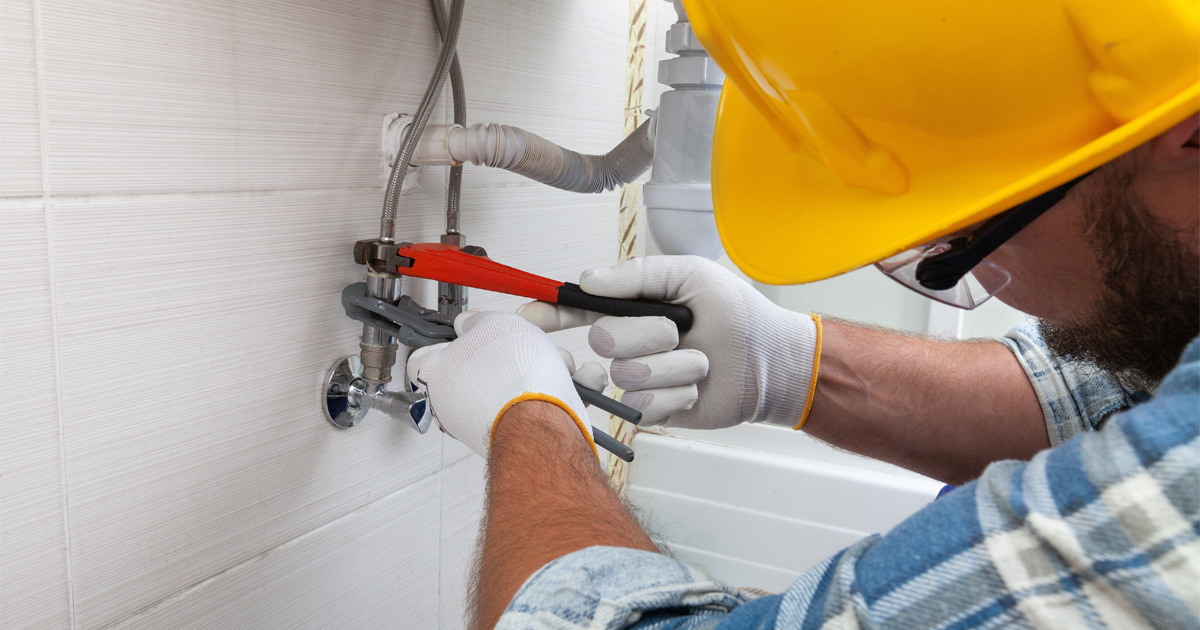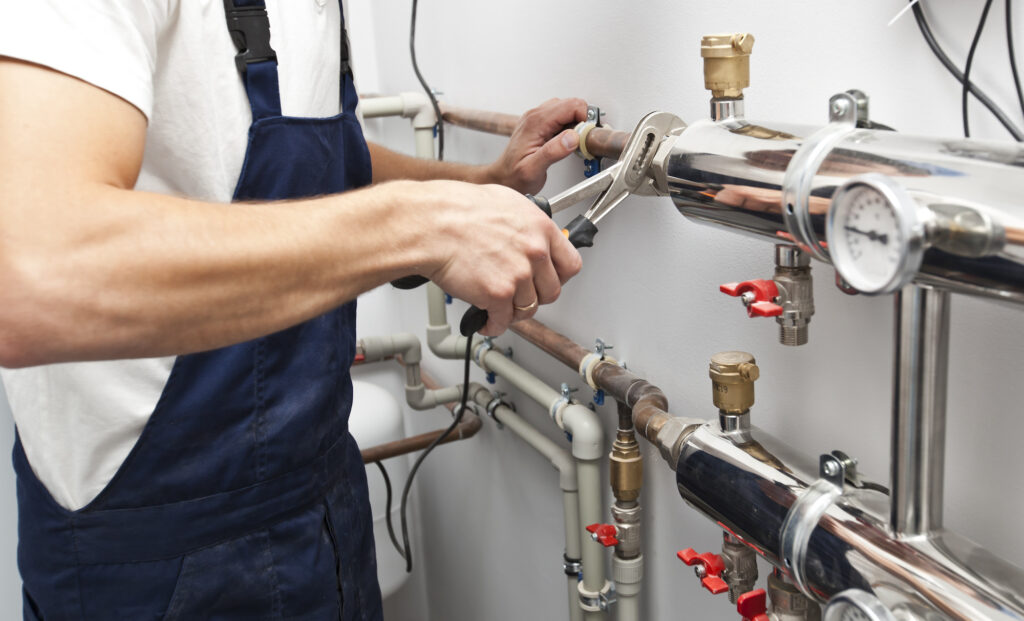Delving into the ABCs of Home Plumbing: A Beginner's Manual
Delving into the ABCs of Home Plumbing: A Beginner's Manual
Blog Article
Presented here down the page you can find a lot of decent material related to Understanding the Basics of Your Home's Plumbing System.

Plumbing is a crucial element of any type of home, responsible for supplying clean water for drinking, food preparation, and showering, along with getting rid of wastewater safely. Understanding the basics of home plumbing is necessary for each homeowner to make sure proper maintenance, troubleshooting, and, if needed, repairs. In this newbie's overview, we'll cover the essential ideas of home plumbing to assist you end up being much more accustomed to just how it works.
Water System
The water supply system brings tidy water right into your home from a community water resource or an exclusive well. It includes a main water line that attaches to your home's plumbing system, typically situated underground. A water meter measures the quantity of water taken in, while a shut-off shutoff enables you to regulate the flow of water right into your home.
Plumbing Fixtures
Plumbing components are gadgets that provide water to various parts of your home and include sinks, taps, bathrooms, showers, bath tubs, and home appliances such as dishwashers and washing equipments. Each fixture is linked to the water supply system by means of pipes and fittings and might have its shut-off shutoff for maintenance or emergency situations.
Water Heating Unit
The water heater is responsible for heating water for residential usage, including showering, food preparation, and cleaning. Typical kinds of hot water heater consist of tank-type water heaters, tankless (on-demand) hot water heater, and heatpump hot water heater. The water heater is linked to the water system and delivers warm water to plumbing fixtures as needed.
Drain System
The water drainage system removes wastewater from your home and carries it away to a sewage treatment center or septic system. It contains a network of pipelines, installations, and fixtures that deliver wastewater from plumbing components to the main drain line or sewage-disposal tank. Correct drain is essential to avoid blockages, backups, and sewage leaks.
Ventilation System
The ventilation system assists keep appropriate air pressure and stop drain gases from entering your home. Air vent pipelines, additionally called air vent heaps, extend from plumbing fixtures to the roofing system, enabling drain gases to get away safely outside. Ventilation pipes additionally permit air to enter the drain system, helping with smooth wastewater circulation and protecting against suction or vacuum results.
Typical Plumbing Devices
Having the right devices on hand is essential for executing standard plumbing fixings and upkeep tasks. Common plumbing devices include flexible wrenches, pipe wrenches, pliers, pipe cutters, hacksaws, bettors, augers (or drain snakes), and Teflon tape. Having these tools easily offered can aid you take on small plumbing issues efficiently.
Standard Plumbing Repair Work
While some plumbing fixings may call for expert support, numerous usual concerns can be attended to with fundamental DIY techniques. Learning just how to repair a leaky tap, unblock a drain, change a commode flapper, or fix a dripping showerhead can conserve you time and money on plumbing repairs.
Verdict
Comprehending the basics of home plumbing is crucial for each homeowner to preserve a safe, useful, and efficient plumbing system. By acquainting yourself with the water system, plumbing fixtures, water drainage system, ventilation system, typical plumbing devices, and basic repair services, you can confidently attend to minor plumbing problems and guarantee your home's plumbing system operates smoothly.
Plumbing for Beginners: A Comprehensive Guide
If you’re a beginner when it comes to plumbing, don’t worry; you’re not alone. Plumbing may seem intimidating, but with the right knowledge and a little practice, you can handle many common plumbing issues on your own. In this comprehensive guide, we will demystify the world of plumbing for beginners, providing you with the basic knowledge and skills needed to tackle common plumbing problems and even take on some DIY plumbing projects.
The Importance of Basic Plumbing Knowledge for Beginners:
First and foremost, basic plumbing knowledge gives you a solid foundation. It helps you grasp the key concepts and terminology that are essential in this field. By learning the basics, you’ll be able to build upon that knowledge and tackle more complex plumbing tasks in the future.
Having a basic understanding of plumbing also enables you to handle common issues that may arise in your home. Picture this: a leaky faucet or a clogged drain. With some basic plumbing knowledge, you’ll have the confidence to troubleshoot and fix these problems on your own. It saves you from unnecessary expenses and the hassle of waiting for a professional to arrive.
As a beginner, learning the basics of plumbing empowers you to take care of your own home. It gives you a sense of independence and self-reliance. You’ll no longer have to rely solely on professionals for every small issue that pops up. Instead, you can handle many tasks yourself, saving time and money in the process.
Remember, everyone starts as a beginner. Embrace the learning process and take small steps to expand your plumbing knowledge. There are plenty of online resources, tutorials, and even local workshops that talk about plumbing for beginners.
Essential Tools for Plumbing for Beginners
As you start your plumbing journey, having the right tools in your toolbox is crucial. Let’s explore some of the must-have tools:
Adjustable Wrench:
This versatile tool is a staple in any plumber’s toolbox. It allows you to tighten or loosen nuts and bolts of various sizes. Make sure to have an adjustable wrench with a comfortable grip.
Pipe Wrench:
A pipe wrench is specifically designed for gripping and turning pipes. It has serrated jaws that provide a strong grip, making it easier to loosen or tighten threaded pipes and fittings.
Plunger:
The plunger is a simple yet effective tool for clearing clogged drains and toilets. It creates suction when you push and pull, helping to dislodge blockages. Keep a good-quality plunger handy for those unexpected clogs.
Pipe Cutter:
When it comes to cutting pipes, a pipe cutter is your go-to tool. It creates clean, precise cuts without damaging the pipe. Look for a pipe cutter that can handle the pipe sizes you’re working with.
Hacksaw:
A hacksaw is useful for cutting through pipes, screws, and other materials. It’s a versatile tool that can handle different cutting tasks. Remember to use a blade suitable for cutting metal.
Tape Measure:
Accurate measurements are crucial in plumbing. A tape measure allows you to measure pipe lengths, distances, and dimensions accurately. Opt for a sturdy tape measure that extends a good length.
Pliers:
Pliers come in handy for various tasks, such as gripping, bending, and cutting. Slip-joint pliers with adjustable jaws are great for gripping pipes, nuts, and bolts.

We hope you enjoyed reading our topic about What to Know About Plumbing: Basics, Tips, and Insights. Thanks a lot for taking a few minutes to read through our article post. Please take the time to promote this entry if you liked it. I praise you for your time. Return soon.
Book With Us Today! Report this page